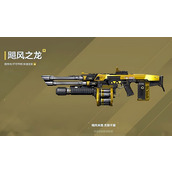Rails学习笔记之Rails 基础教程
resource ,资源。一个资源就是一种相似对象的集合,比如文章,用户。你可以对资源执行创建,读取,更新,删除的动作,这些动作被称为 CRUD 操作。
一个博客,里面可能会有文章资源。创建一个文章资源,名字是 articles,先添加一个资源类型的路由。编辑 config/routes.rb,添加一行 resources :articles,像这样:
Rails.application.routes.draw do
resources :articles
# ...
end
执行:
rails routes
返回:
Prefix Verb URI Pattern Controller#Action
articles GET /articles(.:format) articles#index
POST /articles(.:format) articles#create
new_article GET /articles/new(.:format) articles#new
edit_article GET /articles/:id/edit(.:format) articles#edit
article GET /articles/:id(.:format) articles#show
PATCH /articles/:id(.:format) articles#update
PUT /articles/:id(.:format) articles#update
DELETE /articles/:id(.:format) articles#destroy
welcome_index GET /welcome/index(.:format) welcome#index
root GET / welcome#index
new
访问一下:
http://lo**calhos*t:3000/articles/new
会提示:
Routing Error
uninitialized constant ArticlesController
999C9C92-38E3-4E06-BAE6-EC36BA26A3A1
创建一个控制器:
rails generate controller Articles
返回:
Running via Spring preloader in process 217
create app/controllers/articles_controller.rb
invoke erb
create app/views/articles
invoke test_unit
create test/controllers/articles_controller_test.rb
invoke helper
create app/helpers/articles_helper.rb
invoke test_unit
invoke assets
invoke coffee
create app/assets/javascripts/articles.coffee
invoke scss
create app/assets/stylesheets/articles.scss
打开文件:
app/controllers/articles_controller.rb
里面的内容是:
class ArticlesController
end
一个控制器就是一个类,继承了 ApplicationController 类。在这个类里定义的方法会变成控制器的动作,这些动作执行的就是 CRUD 操作。
刷新之前出错的页面,会提示:
Unknown action
The action 'new' could not be found for ArticlesController
意思是 Rails 在 ArticlesController 这个控制器里找不到 new 这个动作。我们可以手工的在这个控制器里添加一个 new 方法:
class ArticlesController
def new
end
end
刷新,又会提示:
ActionController::UnknownFormat in ArticlesController#new
ArticlesController#new is missing a template for this request format and variant. request.formats: ["text/html"] request.variant: [] NOTE! For XHR/Ajax or API requests, this action would normally respond with 204 No Content: an empty white screen. Since you're loading it in a web browser, we assume that you expected to actually render a template, not… nothing, so we're showing an error to be extra-clear. If you expect 204 No Content, carry on. That's what you'll get from an XHR or API request. Give it a shot.
没找到跟控制器动作对应的视图。创建一个视图文件,位置是:
app/views/articles/new.html.erb
文件里的内容,输入:
添加新文章
刷新页面,页面上会出现 “添加新文章” 这几个字儿。
表单
用 form builder 在模板里面创建表单,用一下 form_for 方法,在 new.html.erb 文件里添加下面代码:
把 :article 交给 form_for 方法,告诉 form_for 这是为谁做的表单。在方法的代码块里,FormBuilder 对象是用 f 表示的。用它创建了两个 label 标签,一个 text 文本框,一个 text_area 文件区域,还有一个 submit 提交按钮。url 选项设置了表单的 action 属性的值,articles_path 相当于 articles#create 动作。
点击表单的 save 按钮,会报错:
Unknown action
The action 'create' could not be found for ArticlesController
create
继续编辑 articles 控制器:
class ArticlesController
def new
end
def create
end
end
添加了一个 create 方法,再次刷新页面。没有反应,因为我们没有指定要响应的东西,所以 Rails 默认会响应 204 No Content 。改造一下 create 方法:
def create
render plain: params[:article].inspect
end
给 render 方法一个 hash,key 是 :plain,value 是 params[:article].inspect。params 表示的是表单里的参数(或字段),它返回的是一个 ActionController::Parameters 对象。
刷新,在表单里输入点内容,然后再点一下 Save Article 按钮,这次会返回:
<:parameters>"第一篇文章", "text"=>"这是文章的内容"} permitted: false>
Article 模型
Rails 里的模型使用单数名字,对应的数据库表用的是复数名字。
创建一个 Article 模型,title 是字符串类型,text 是文本类型,执行:
rails generate model Article title:string text:text
返回:
Running via Spring preloader in process 225
invoke active_record
create db/migrate/20160918102316_create_articles.rb
create app/models/article.rb
invoke test_unit
create test/models/article_test.rb
create test/fixtures/articles.yml
运行 migration
打开之前创建的 migration 文件,位置:db/migrate/YYYYMMDDHHMMSS_create_articles.rb,里面的内容是:
class CreateArticles
def change
create_table :articles do |t|
t.string :title
t.text :text
t.timestamps
end
end
end
运行 migration:
rails db:migrate
返回:
== 20160918102316 CreateArticles: migrating ===================================
-- create_table(:articles)
-> 0.0166s
== 20160918102316 CreateArticles: migrated (0.0173s) ==========================
save
打开文件:
app/controllers/articles_controller.rb
把里面定义的 create 方法编辑成这样:
def create
@article = Article.new(params[:article])
@article.save
redirect_to @article
end
打开地址:
http://lo**calhos*t:3000/articles/new
试着发布一篇新文章,你会看到错误:
ActiveModel::ForbiddenAttributesError in ArticlesController#create
ActiveModel::ForbiddenAttributesError
这是为了安全报的错,strong parameters,我们需要告诉 Rails 允许哪些参数进入到控制器动作里。允许一下 title 与 text,使用 require 与 permit,改造一下 create 方法:
@article = Article.new(params.require(:article).permit(:title, :text))
也可以这样改造 create 方法:
def create
@article = Article.new(article_params)
@article.save
redirect_to @article
end
private
def article_params
params.require(:article).permit(:title, :text)
end
在发布新文章的页面上,在表单里输入点东西,提交。这次又会出现:
Unknown action
The action 'show' could not be found for ArticlesController
show
打开文件:
app/controllers/articles_controller.rb
定义 show 方法:
def show
@article = Article.find(params[:id])
end
用 Article.find 找到请求的文章,交给 @article,Rails 会把所有的实例变量传递给视图。
创建视图文件:
app/views/articles/show.html.erb
内容:
Title:
Text:
再去创建一篇文章,打开地址:
http://lo**calhos*t:3000/articles/new
B24397F6-B354-4319-8493-E723F2341ED4
index
打开文件:
app/controllers/articles_controller.rb
定义 index 方法:
def index
@articles = Article.all
end
创建视图文件:
app/views/articles/index.html.erb
内容:
文章列表
-
Title:
Text:
打开地址:
http://loc*a*lh*ost:3000/articles
4365F51E-C426-4BAB-B685-B510750AE9EC
link_to
打开文件:
app/views/welcome/index.html.erb
修改成:
hello
link_to 是一个视图 helper。上面创建了一个链接是 “我的博客”,打开的地址是文章列表。
打开文件:
app/views/articles/index.html.erb
添加一个新建文章的链接:
打开文件:
app/views/articles/new.html.erb
添加一个文章列表的链接:
打开文件:
app/views/articles/show.html.erb
添加一个文章列表的链接:
验证
打开文件:
app/models/article.rb
编辑成:
class Article
validates :title, presence: true, length: { minimum: 5 }
end
上面验证的是 title,它的长度至少是 5 个字符。
打开文件:
app/controllers/articles_controller.rb
把 new 与 create 方法,修改成:
def new
@article = Article.new
end
def create
@article = Article.new(article_params)
if @article.save
redirect_to @article
else
render 'new'
end
end
打开地址:
http://lo**calhos*t:3000/articles/new
输入的标题小于 5 个字符,然后提交表单,你会发现,会返回到新建文章的页面,并且之前在表单里输入的东西仍然会存在。
再显示点错误的提示,打开文件:
app/views/articles/new.html.erb
像这样改造一下表单:
...
这次发布文章的时候,少输入几个字儿,会在页面上显示错误。
593FE234-62F2-4239-8B36-E97DE04625B0
edit
打开文件:
app/controllers/articles_controller.rb
添加一个 edit 方法:
def edit
@article = Article.find(params[:id])
end
创建新文件:
app/views/articles/edit.html.erb
内容可以这样:
编辑文章
这回我们把表单的动作指向了 update 动作,这个动作还没有定义。
update
打开文件:
app/controllers/articles_controller.rb
添加一个 update 方法:
def update
@article = Article.find(params[:id])
if @article.update(article_params)
redirect_to @article
else
render 'edit'
end
end
打开文件:
app/views/articles/index.html.erb
在 show 的下面添加一个编辑按钮:
打开文件:
app/views/articles/show.html.erb
也添加一个编辑按钮:
partials
文章的编辑页面与新建文章页面很像,它们都使用了一样的代码来显示表单。使用视图 partial 可以去掉重复。partial 文件名有一个下划线前缀。
创建新文件:
app/views/articles/_form.html.erb
文件里的内容:
@article 是一个资源,它对应一整套 RESTful 路由。Rails 知道自己应该使用哪个地址与方法。
更新文件:
app/views/articles/new.html.erb
内容:
添加新文章
更新文件:
app/views/articles/edit.html.erb
内容:
编辑文章
destroy
用 destroy 方法删除资源。
打开文件:
app/controllers/articles_controller.rb
添加 destroy 方法:
def destroy
@article = Article.find(params[:id])
@article.destroy
redirect_to articles_path
end
打开文件:
app/views/articles/index.html.erb
在模板里添加删除按钮:
method: :delete,
data: { confirm: 'are you sure?' } %>
2BF07671-D5FD-4D24-9EF0-A03F9B9BA913
第二个模型
再添加一个处理文章评论的模型。
生成模型
rails generate model Comment commenter:string body:text article:references
返回:
Running via Spring preloader in process 48
invoke active_record
create db/migrate/20160918190201_create_comments.rb
create app/models/comment.rb
invoke test_unit
create test/models/comment_test.rb
create test/fixtures/comments.yml
打开文件:
app/models/comment.rb
里面的内容是:
class Comment
belongs_to :article
end
比我们之前创建的 Article 模型多出一个 belongs_to :article ,这里设置的是 Active Record 关联。
执行 migration:
rails db:migrate
关联模型
Active Record 的关联可以声明两个模型之间的关系。这里就是评论与文章:
每个评论都属于一篇文章
一篇文章可以有多条评论
打开文件:
app/models/article.rb
添加一行代码:
has_many :comments
整体的样子是:
class Article
has_many :comments
validates :title, presence: true, length: { minimum: 5 }
end
为评论添加路由
打开文件:
config/routes.rb
像这样编辑:
resources :articles do
resources :comments
end
这里给 articles 添加了一个嵌套的资源。
生成控制器
rails generate controller Comments
返回:
Running via Spring preloader in process 65
create app/controllers/comments_controller.rb
invoke erb
create app/views/comments
invoke test_unit
create test/controllers/comments_controller_test.rb
invoke helper
create app/helpers/comments_helper.rb
invoke test_unit
invoke assets
invoke coffee
create app/assets/javascripts/comments.coffee
invoke scss
create app/assets/stylesheets/comments.scss
打开文件:
app/controllers/comments_controller.rb
编辑内容:
class CommentsController
def create
@article = Article.find(params[:article_id])
@comment = @article.comments.create(comment_params)
redirect_to article_path(@article)
end
private
def comment_params
params.require(:comment).permit(:commenter, :body)
end
end
评论视图
打开文件:
app/views/articles/show.html.erb
添加评论的表示与评论用的表单:
评论
评论者:
评论:
添加评论
AD07E77C-C4ED-44BF-B189-6EEA5E5D18C3
Refactoring
创建文件:
app/views/comments/_comment.html.erb
文件里的内容:
评论者:
评论:
打开文件:
app/views/articles/show.html.erb
修改显示评论用的代码:
评论
render 会迭代 @article.comments。
创建文件:
app/views/comments/_form.html.erb
文件里的内容:
打开文件:
app/views/articles/show.html.erb
修改评论表单:
删除评论
打开文件:
app/views/comments/_comment.html.erb
添加一个删除链接:
method: :delete,
data: { confirm: 'are you sure?' } %>
点击 delete comment,会执行 DELETE /articles/:article_id/comments/:id 。
打开文件:
app/controllers/comments_controller.rb
添加一个 destroy 方法:
def destroy
@article = Article.find(params[:article_id])
@comment = @article.comments.find(params[:id])
@comment.destroy
redirect_to article_path(@article)
end
删除相关对象
删除文章,同时也删除掉属于这篇文章的评论。
打开文件:
app/models/article.rb
编辑一下 has_many 那行代码:
has_many :comments, dependent: :destroy
相关文章
精彩推荐
-
 下载
下载我的世界国际版老版
模拟经营 我的世界国际版老版我的世界国际版正式版是一款拥有超高自由度玩法是沙盒手游,经典
-
 下载
下载我的世界国际版完整版
模拟经营 我的世界国际版完整版我的世界国际服完整版是一款十分经典好玩的mc沙盒类游戏,在海
-
 下载
下载摩托车销售模拟器内置菜单中文版
模拟经营 摩托车销售模拟器内置菜单中文版摩托车出售模拟器,又名摩托车销售模拟器,这是一个以摩托车销售
-
 下载
下载船舶模拟2020最新版
模拟经营 船舶模拟2020最新版船舶模拟2020是玩法非常有意思的模拟驾驶游戏,高清3d画质
-
 下载
下载油管主播的生活2内置菜单版
模拟经营 油管主播的生活2内置菜单版油管主播的生活2内置菜单版是一款模拟养成类游戏,在这里你将体















